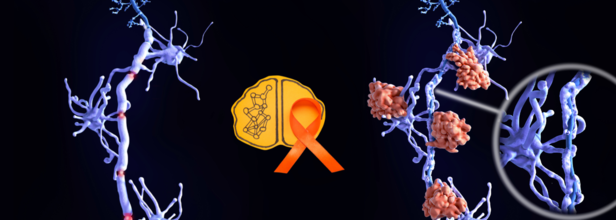- Health Conditions A-Z
- Health & Wellness
- Nutrition
- Fitness
- Health News
- Ayurveda
- Videos
- Medicine A-Z
- Parenting
- Web Stories
Struggling To Sleep? Try These Five-Minute Nighttime Practices To Ease Anxiety

Credit: Canva
You’re exhausted after a long day. You finally get into bed, hoping for restful sleep—but your mind won’t switch off. Sound familiar?
According to spiritual coach and energy healer Oliver Niño, who works with celebrities like Tony Robbins and Jessica Alba, the issue might not be your bedtime routine or screen time but the stress you've carried into the night.
“Anxiety tends to build up because people carry it on from their day, and they sleep with it,” Niño told *The Post*. “They wake up the next day, and they really aren’t able to get enough sleep. The anxieties of the day before follow them over the next day, and they kind of snowball.”
This is why Niño emphasizes what he calls a “nighttime anxiety detox.” And the busier you are, the more crucial it becomes. “A lot of times, people say, ‘I don’t have time to do much,’” he said. “To me, it’s reversed. The harder it is, the more you have to do it.”
To help his clients—many of whom are pressed for time—Niño focuses on short, effective practices that take five minutes or less. In his new book, Do This Before Bed: Simple 5-Minute Practices That Will Change Your Life, he shares techniques that aim to reset the nervous system and clear emotional clutter before sleep.
Color Therapy
Color therapy, Niño explains, involves visualizing colors as you prepare for sleep. “When you’re going to bed or when you’re meditating and you’re imagining different colors coming down and filling you up,” he said, this practice taps into ancient beliefs that colors carry specific energies and healing properties. He suggests imagining “white coming down from the sky, filling you up,” and experimenting with different colors to find one that brings calm and peace.
Geometric Breathing
Many are familiar with breathwork, but Niño prefers “geometric breathing,” which involves inhaling, holding, and exhaling in equal intervals—typically five seconds each. “While you’re doing that, you’re visualizing—you’re inhaling positive energy, you’re inhaling love and light,” he said. “And when you’re releasing, when you’re exhaling, you’re breathing out every stress, every anxiety, everything that you held onto that day.”
Cord Cutting
When people affect your mood long after they’ve left the room, it could be due to what Niño calls energetic cords. These emotional ties can drain you. “If someone’s affecting me, I probably have what I call an energetic cord attached from them to me,” he explained. To break this, Niño uses visualization: he imagines being filled with light, then visualizes his hands as swords slicing through those cords.
Physical Activity
Whether it's journaling, dancing, or stretching, Niño recommends using movement to release built-up tension. “For some people, they want to go for a night walk, or they want to dance or shake it off or do some yoga,” he said. Other calming activities include salt baths, sound baths, and incense.
Laughter Therapy
Sometimes, a little humor can work wonders. “Some people, they want laughter therapy,” Niño said. Watching a funny video or scrolling through memes can provide that release. “When they’re laughing, anxiety can’t build up.”
New Oral Treatment Offers Hope For MS Patients Battling Muscle Spasticity

Credits: Canva
For many individuals living with multiple sclerosis (MS), muscle spasticity, an often painful and limiting symptom, can be one of the most persistent and frustrating aspects of the disease. Characterized by stiff or tight muscles that resist movement, spasticity can interfere with basic activities like walking, dressing, or even sleeping. But an encouraging breakthrough may be on the horizon.
Researchers at the University of Cincinnati’s Gardner Neuroscience Institute are currently conducting a promising Phase 2 clinical trial for a new oral drug that targets the body’s endocannabinoid system, a natural internal mechanism that helps regulate muscle tone and relaxation. Rather than introducing an external muscle relaxant, this treatment is designed to enhance the body’s own ability to ease muscle stiffness by preventing the breakdown of naturally occurring compounds called endocannabinoids.
“Our goal is to find a treatment that’s not only effective, but also better tolerated during the day,” said Dr. Shahla Hosseini, MD, PhD, in a statement released by the university. “Most existing oral medications come with side effects like drowsiness or fatigue, which can significantly reduce a patient’s quality of life.”
How the New Drug Works
The new treatment under investigation inhibits specific enzymes that normally break down endocannabinoids in the body. These endocannabinoids function like the body’s natural muscle relaxers, but in people with MS, their levels tend to be low. By elevating endocannabinoid levels, the drug aims to restore better muscle control without the sedation that plagues current treatments.
This trial will involve approximately 200 participants from multiple international sites, making it a robust, multicenter effort. Over a period of six weeks, participants will be randomly assigned to receive one of three different doses of the study drug or a placebo. There’s also an optional six-week extension, which allows all participants to potentially receive the active drug and helps researchers compare the varying doses more effectively.
If successful, the trial could pave the way for a new class of medications to be used in tandem with current therapies like physiotherapy and botulinum toxin (Botox) injections. The drug’s oral format also means it could offer a non-invasive, easier-to-manage option for long-term symptom relief.
Broader Potential Beyond MS
While this trial is focused on MS-related spasticity, researchers are hopeful that the drug could eventually help individuals with other neurological disorders that impact muscle control, including spinal cord injuries, cerebral palsy, and stroke. This makes the study’s success particularly significant, not just for those with MS, but for a wider community of patients affected by similar conditions.
What is Multiple Sclerosis (MS)?
Multiple sclerosis (MS) is a chronic autoimmune disease that affects the central nervous system—including the brain and spinal cord. In MS, the immune system mistakenly attacks the protective sheath (myelin) that covers nerve fibers, disrupting the communication between the brain and the rest of the body. Over time, this can lead to nerve damage and deterioration.
Common Symptoms of MS:
- Muscle spasticity or stiffness
- Fatigue
- Difficulty walking or maintaining balance
- Vision problems (e.g., blurred or double vision)
- Numbness or tingling, especially in the limbs
- Cognitive difficulties
- Bladder and bowel dysfunction
- Pain or muscle cramps
Symptoms can vary widely depending on the area of the nervous system affected, and they often come and go in episodes known as relapses.
How is MS Diagnosed?
Diagnosing MS can be complex and typically involves a combination of:
- Neurological exams to assess reflexes, vision, coordination, and balance
- MRI scans to detect lesions or areas of demyelination in the brain or spinal cord
- Lumbar puncture (spinal tap) to examine cerebrospinal fluid for specific immune markers
- Evoked potential tests to measure electrical activity in response to stimuli
There’s no single test for MS, so diagnosis often involves ruling out other conditions with similar symptoms.
Think It Is Just a Cold? It Could Be Allergic Rhinitis, and Here is Why Early Testing and Treatment Matter

When the sniffles will not stop and your mornings start with continuous sneezing, it is natural to assume you have caught a cold. But what if it is something more persistent, like allergic rhinitis?
What is allergic rhinitis?
Allergic rhinitis is an allergic reaction that occurs when your immune system overreacts to allergens like pollen, dust mites, animal dander, or mould. This common condition is marked by a suite of symptoms, including sneezing spells, a runny or blocked nose, itchy, watery eyes, post-nasal drip, fatigue, poor sleep, and constant coughing. Unlike the common cold, it is not caused by a virus, and symptoms can persist for weeks or months or even all year round.
How is it diagnosed?
Dr. Manish Arya of the ENT, Allergy and Vertigo Clinic points out that “most people with allergies are unaware of the exact trigger causing their symptoms. That is where the skin prick test (SPT) comes in.”
This quick, safe diagnostic tool involves pricking tiny amounts of various allergens into the skin—typically on the forearm or back. “If you are allergic to a substance, a small red bump (like a mosquito bite) appears in 15–20 minutes,” he explains.
The benefits of the SPT are many:
- It helps identify specific allergens such as dust mites, pollens, fungi, pets, or certain foods.
- It guides both avoidance strategies and treatment plans.
- It is painless – just small skin pricks!
What is allergy immunotherapy?
While most people turn to antihistamines or nasal sprays, Dr. Arya says that these only provide temporary relief. “That is where immunotherapy comes into play; it is like a vaccine for your allergy,” he says. Immunotherapy aims to gradually desensitise the immune system to allergens and is the only known method to reduce allergies in the long term.
According to Dr Arya, it can be administered through:
- Allergy shots (Subcutaneous Immunotherapy or SCIT)
- Under-the-tongue drops/tablets (Sublingual Immunotherapy or SLIT)
What does immunotherapy offer?
- Reduces symptom severity over time.
- Decreases dependency on medicines.
- Prevents worsening of allergies or the development of asthma.
- Safe for children and adults.
Dr. Arya emphasises, “It is a long-term investment in your health, usually taken over 3 years. In some cases, it may be extended up to 5 years. It does not contain any steroids or antihistamines and is completely natural.”
Why Early Testing and Treatment Matter
“Allergic rhinitis is not just a nuisance,” warns Dr. Arya. If left untreated, it can:
- Over a period of time, it may worsen to asthma as well in about 50 per cent of cases.
- Cause recurrent sinus infections.
- Affect sleep and work/school performance.
- Lead to ear problems in children.
“Allergies can take a toll on your quality of life,” Dr. Arya says. So instead of just popping pills every season, it is time to find out what you are allergic to and treat the root cause. Skin prick testing and immunotherapy have transformed how we manage allergic rhinitis today.”
Quick Allergy Checklist – Do You Have It?
- Frequent sneezing, especially in the mornings
- Nasal congestion or watery discharge
- Itchy eyes or throat
- Symptoms triggered by dust, pollen, or pets – or sometimes without any trigger!
- No fever (unlike colds)
Developing These Health Conditions Before 55 Can Double The Risk Of Dementia

(Credit-Canva)
Dementia is a condition that can effectively dismantle a person’s life and everything they have worked for. Your memories, the way you think and behave, and all of these factors will slowly change as dementia progresses. While we have known about the disease for quite some time now, there are many aspects of it that we are still exploring, like what are some of its risk factors and causes, as these will help us find a cure for the disease.
New research suggests that developing conditions like heart disease and diabetes before age 55 could significantly raise your chances of developing dementia later in life. The study also indicates that experiencing strokes or mental health issues such as anxiety and depression between ages 55 and 70 might double that risk.
Key Conditions and Critical Time Windows
The study, published in Brain Communications, revealed that heart conditions, including heart disease and an irregular heartbeat called atrial fibrillation, along with diabetes, were most strongly linked to an increased risk of dementia when they appeared before age 55. However, for those between 55 and 70, mental health disorders like anxiety and depression, as well as strokes, were found to double the dementia risk. This suggests different conditions pose a higher risk at different stages of life.
Link Between Chronic Conditions and Dementia
Researchers at the University of Oxford found that a large majority, about 80%, of people with dementia also have two or more chronic health problems. However, there hasn't been a clear understanding of how specific diseases, and when they occur, are connected to dementia. This study aimed to identify important periods in life where certain illnesses pose the biggest threat. They analysed health information from over 282,000 individuals in the UK Biobank, looking at patterns across 46 long-term health conditions.
Other Risk Factors for Dementia
According to Stanford Health Care, many things can raise a person's chance of getting dementia, though some factors we can change and others we can't. Growing older significantly increases the risk for common types like Alzheimer's and vascular dementia. Your genes and family history also play a role, as certain genes can increase the risk for Alzheimer's and other rarer forms like Creutzfeldt-Jakob disease.
However, having a family member with Alzheimer's doesn't guarantee you'll get it, and many without a family history still develop it. People with Down's syndrome often show signs of Alzheimer's in middle age.
Lifestyle choices matter too. For example, smoking heavily increases dementia risk, possibly due to its link with hardened arteries. While heavy alcohol use seems to increase risk, moderate drinking might actually lower it compared to drinking a lot or not at all. Health conditions are also key factors. Atherosclerosis, where arteries harden, is a big risk for vascular dementia and might be linked to Alzheimer's.
High "bad" cholesterol (LDL), high levels of an amino acid called homocysteine, and diabetes all raise the risk for both Alzheimer's and vascular dementia. Finally, if someone has mild cognitive impairment, they are at a much higher risk of developing dementia, with about 40% of those over 65 progressing to dementia within three years in one study.
Insights for Future Prevention
This research highlighted that individuals who had conditions like heart disease and diabetes in middle age and then later developed strokes and mental health disorders faced the highest chance of getting dementia. Experts em that considering all existing health issues is important when assessing someone's dementia risk, which could help in creating strategies to lower that risk at particular life stages. Future studies will explore if managing or preventing these health problems during these critical periods could reduce dementia rates.
© 2024 Bennett, Coleman & Company Limited

